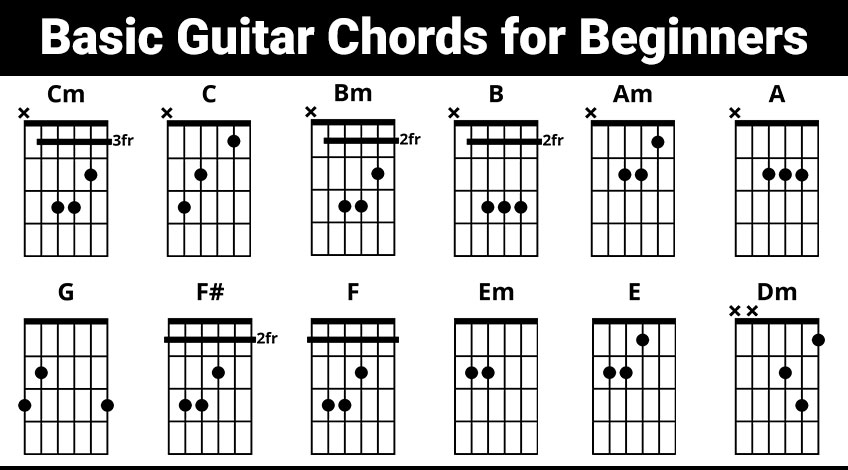
In the above image, you’ll see what guitar diagrams look like. They’re viewed as if you’re facing the guitar, so the string all the way to the left is the low E string.
The dots represent which frets you place your fingers on. Some diagrams put numbers inside the dots that correspond to each finger:
- 1 is your index finger
- 2 is your middle finger
- 3 is your ring finger
- 4 is your pinky
And if you see a line going across all the strings on one fret, that’s a bar chord. The line is where you press down all the strings under the line with the side of your index finger.
There’s another way to write and read chord layouts. It also uses numbers, but in this case the numbers represent the fret you play – “0” meaning you play the string without pressing on any part of it, “X” meaning you don’t play the string at all. Like this…
E Major:
e | 0
B | 2
G | 2
D | 2
A | 0
E | X
What is the 3 Chord Trick?
Caleb J. Murphy (CareersInMusic)
The 3-Chord Trick is when a song uses just three chords. In music theory, these chords are referred to as I-IV-V or 1-4-5. This refers to the first, fourth, and fifth chords in a scale. For example, in the key of C major, the I-IV-V progression would be C major, G major, and A minor. Learn more about music theory here.



























